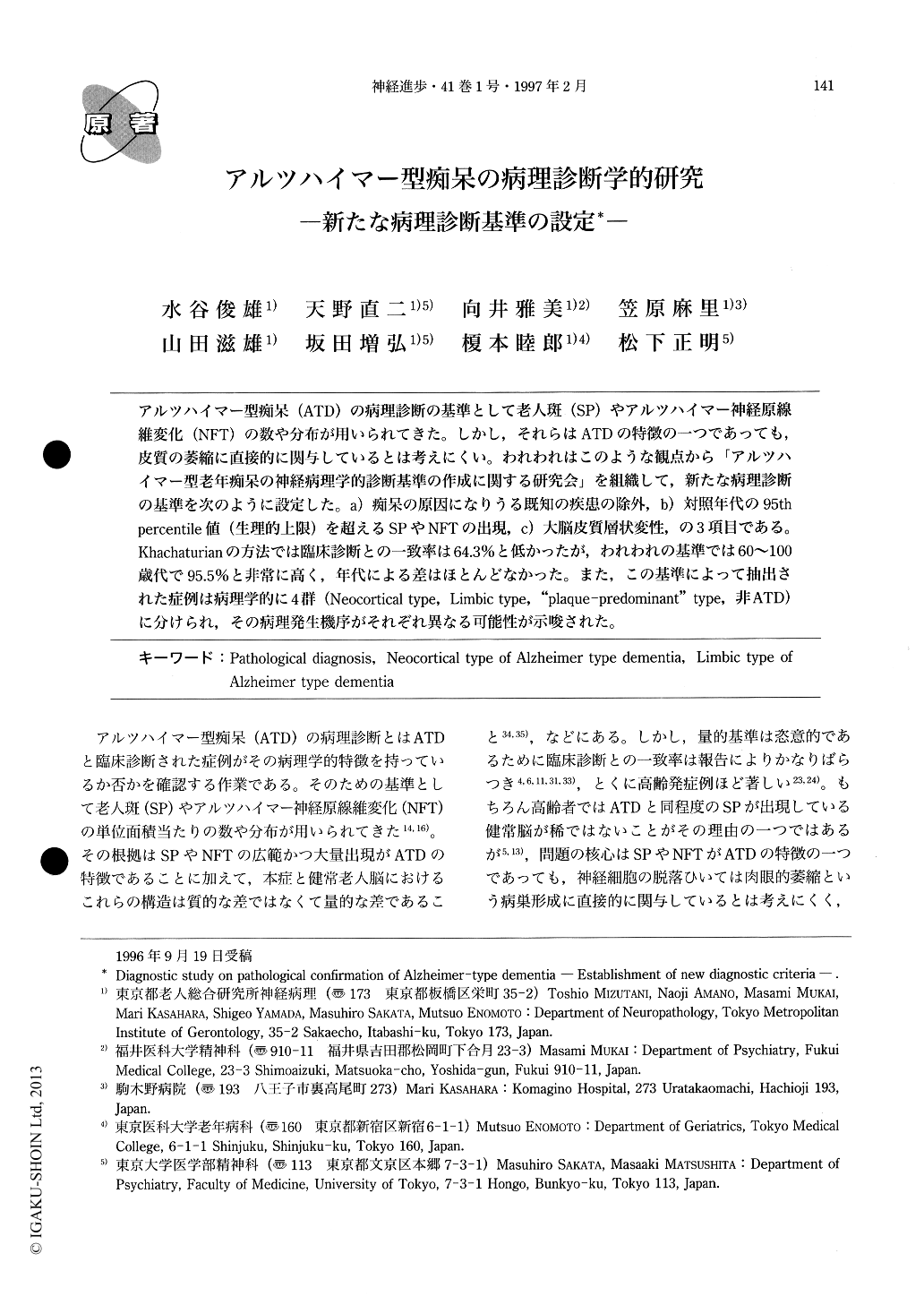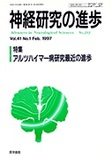Japanese
English
- 有料閲覧
- Abstract 文献概要
- 1ページ目 Look Inside
アルツハイマー型痴呆(ATD)の病理診断の基準として老人斑(SP)やアルツハイマー神経原線維変化(NFT)の数や分布が用いられてきた。しかし,それらはATDの特徴の一つであっても,皮質の萎縮に直接的に関与しているとは考えにくい。われわれはこのような観点から「アルツハイマー型老年痴呆の神経病理学的診断基準の作成に関する研究会」を組織して,新たな病理診断の基準を次のように設定した。a)痴呆の原因になりうる既知の疾患の除外,b)対照年代の95thpercentile値(生理的上限)を超えるSPやNFTの出現,c)大脳皮質層状変性,の3項目である。Khachaturianの方法では臨床診断との一致率は64.3%と低かったが,われわれの基準では60~100歳代で95.5%と非常に高く,年代による差はほとんどなかった。また,この基準によって抽出された症例は病理学的に4群(Neocortical type,Limbic type,“plaque-predominant”type,非ATD)に分けられ,その病理発生機序がそれぞれ異なる可能性が示唆された。
We established the new diagnostic criteria for pathological confirmation of clinically diagnosed Alzheimer-type dementia (ATD) instead of the quantitative diagnosis with the number of senile plaques (SPs), because of the following reasons. 1) Although extensive appearance of numerous SPs and neurofibrillary tangles (NFTs) is one of the pathological characteristics, it could not be responsible for cerebral cortical atrophy. 2) The number of the SPs could not be related to the presence or the absence of dementia.

Copyright © 1997, Igaku-Shoin Ltd. All rights reserved.


